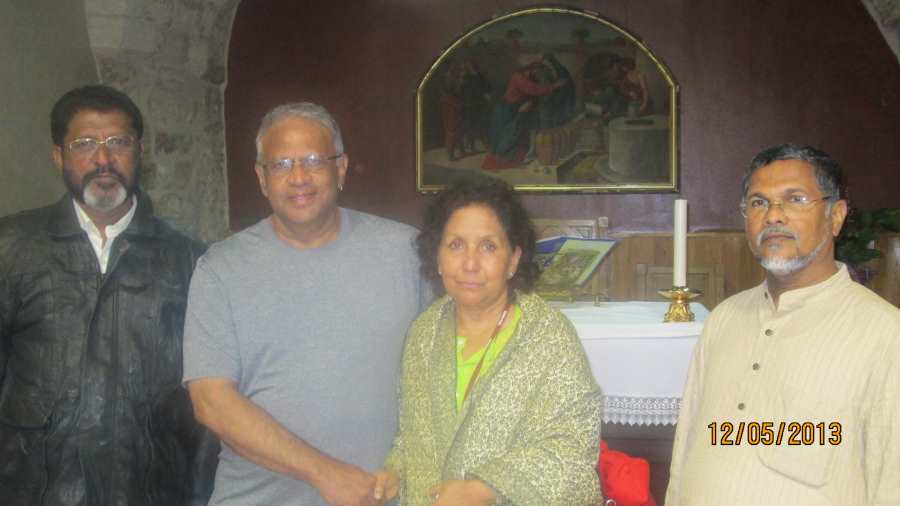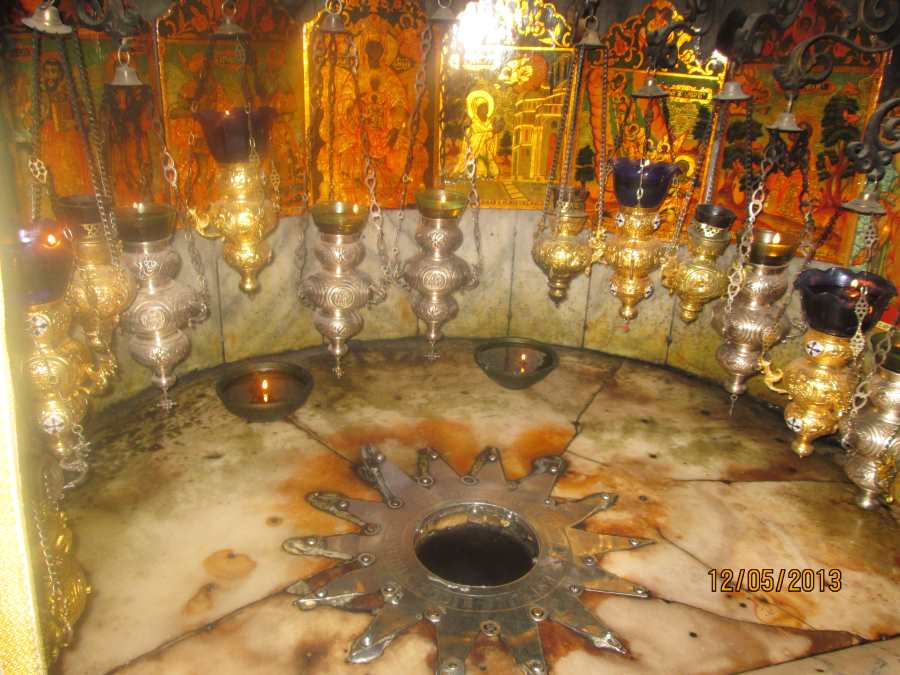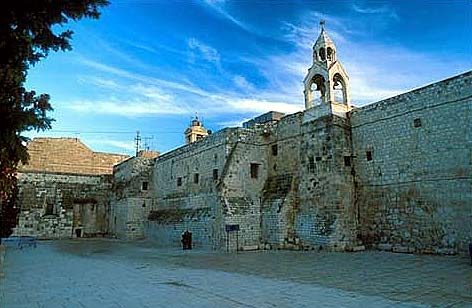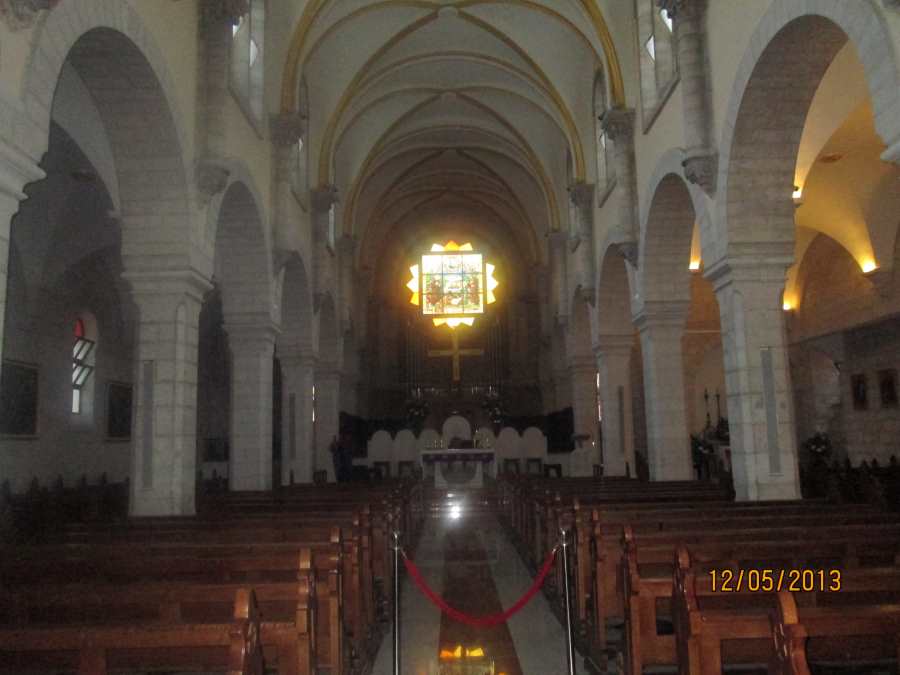From Nazareth we traveled to Cana where Jesus performed his first miracle and turned water into wine at a wedding where the hosts had run short on wine. According to John 2:1-11:
“On the third day there was a wedding in Cana of Galilee, and the mother of Jesus was there. Jesus and his disciples had also been invited to the wedding. When the wine gave out, the mother of Jesus said to him, “They have no wine.”
And Jesus said to her, “Woman, what concern is that to you and to me? My hour has not yet come.”
His mother said to the servants, “Do whatever he tells you.” Now standing there were six stone water jars for the Jewish rites of purification, each holding twenty or thirty gallons. Jesus said to them, “Fill the jars with water.” And they filled them up to the brim. He said to them, “Now draw some out, and take it to the chief steward.” So they took it.
When the steward tasted the water that had become wine, and did not know where it came from (though the servants who had drawn the water knew), the steward called the bridegroom and said to him, “Everyone serves the good wine first, and then the inferior wine after the guests have become drunk. But you have kept the good wine until now.” Jesus did this, the first of his signs, in Cana of Galilee, and revealed his glory; and his disciples believed in him.”
As is the case with other sites associated with Jesus there are two conflicting versions of where this occurred. We went to the one that is traditionally associated with the event – Kafr Cana – where a small Franciscan church has been erected.
Since the miracle associated with turning water into wine occurred during a wedding feast, Achen offered all members of the group an opportunity to renew their marriage vows at this church. A brief service was conducted by the two Achens, and some of the married couples renewed their vows. Mini and I did so as well and the picture below shows us with the Achens – back wearing their street garb – after the ceremony. During the ceremony, we were told to hold hands – I was situated to Mini’s right and as I held her right hand with my left one, an Achen hastily asked me to hold her hand with my right hand – similar to what you see in the picture.

After Cana we went to Bethlehem – an area controlled by the Palestinians – to visit the Church of the Nativity built in the location where it is believed that Jesus Christ was born. Interestingly there are no other sites identified with the birth of Jesus and this location is one of the holiest ones for Christians. For my part, it was certainly one of the more emotional moments of the tour of the holy sites. Just about everyone in the group prostated themselves at the site where Jesus was believed to be born – marked with a 14 sided star.

.
From the UNESCO website: “Bethlehem lies 10 kilometres south of the city of Jerusalem, in the fertile limestone hill country of the Holy Land. Since at least the 2nd century AD people have believed that the place where the Church of the Nativity, Bethlehem, now stands is where Jesus was born. One particular cave, over which the first Church was built, is traditionally believed to be the Birthplace itself.

“In locating the Nativity, the place both marks the beginnings of Christianity and is one of the holiest spots in Christendom. The original basilica church of 339 AD (St Helena), parts of which survive below ground, was arranged so that its octagonal eastern end surrounded, and provided a view of, the cave. This church is overlaid by the present Church of the Nativity, essentially of the mid-6th century AD (Justinian), though with later alterations. It is the oldest Christian church in daily use. Since early medieval times the Church has been increasingly incorporated into a complex of other ecclesiastical buildings, mainly monastic. As a result, today it is embedded in an extraordinary architectural ensemble, overseen by members of the Greek Orthodox Church, the Custody of the Holy Land and the Armenian Church, under the provisions of the Status Quo of the Holy Places established by the Treaty of Berlin (1878).

“During various periods over the past 1700 years, Bethlehem and the Church of the Nativity have been, and still are, a pilgrim destination. The eastern end of the traditional route from Jerusalem to the Church, known as the Pilgrimage route, marks the road that connects the traditional entrance of Bethlehem, near King David’s Wells with the Church of the Nativity, and extends along the Star Street through the Damascus Gate, or Qos Al-Zarara, the historical gate of the town, towards the Manger Square. The Route continues to be celebrated as the path followed by Joseph and Mary during their trip in Bethlehem during Christmas ceremonies each year, and is followed ceremonially by Patriarchs of the three churches at their several Christmases, and during their official visits to Bethlehem.

“The property encompasses the Church of the Nativity and its architectural ensemble, which is composed of the Armenian, Franciscan and Greek Orthodox Convents, as well as an area of terraced land to the east and a short stretch of the Pilgrimage Route. It thus includes all the buildings that form the focus of pilgrimage and the cave that is believed to be the birthplace of Jesus.

We concluded our day in Bethlehem with a visit to a Christian shop that sold various artifacts. Our guide – a Palestinian Christian named Shukri, told us about the terrible privations faced by Christians in Palestine because of the dispute with Israel. As he put it, the Palestinian Muslims receive financial aid from the oil rich Arab countries but the Christians have no one to help them and as a result many have left Palestine and moved to other countries. He encouraged us – if we were buying any artifacts or mementos to do so from Christian owned shops. We did as did many others in the group.
We then proceeded to Jerusalem which was, in many respects, the apex of the tour of the Holy Land.
Tags: Church of the Nativity, Jesus first miracle, renewal of marriage vows, site where Jesus was born, turning water into wine at Cana




